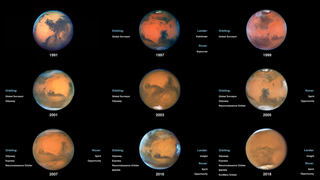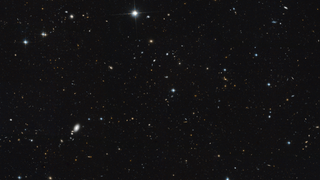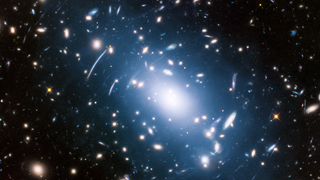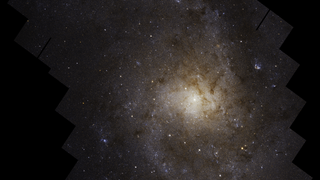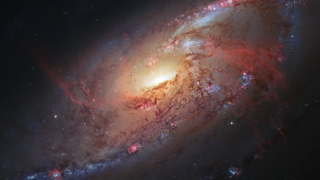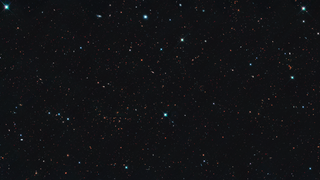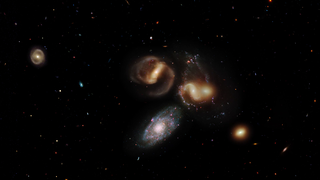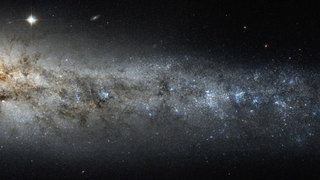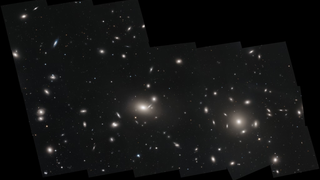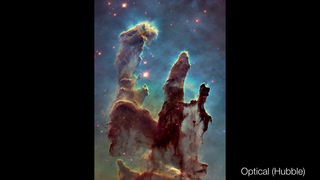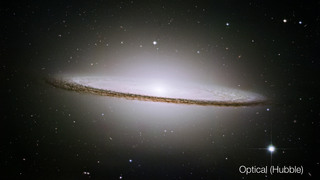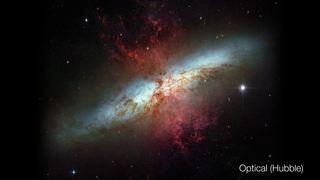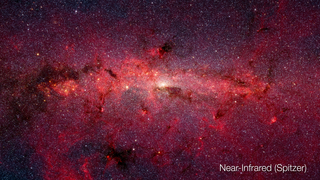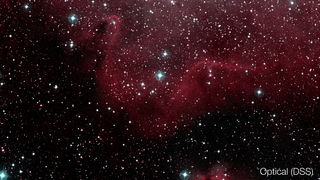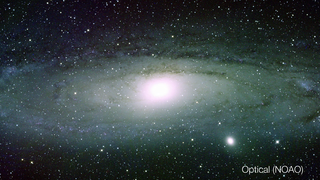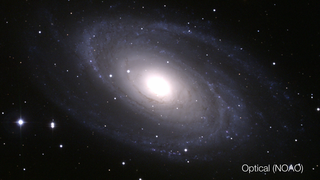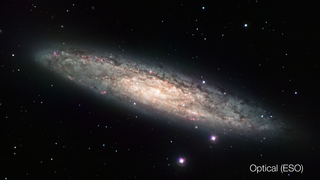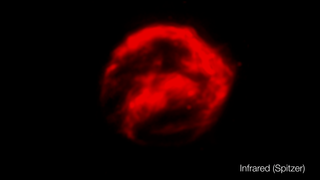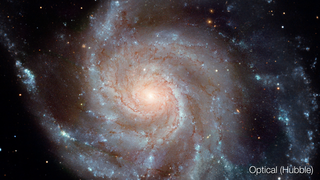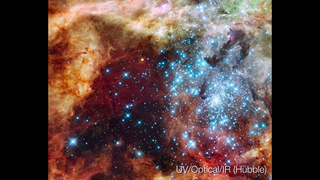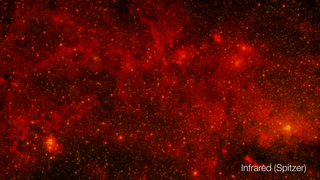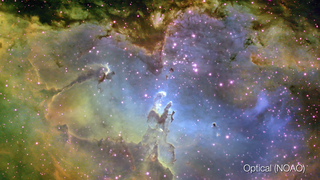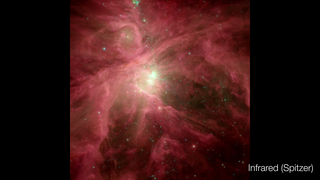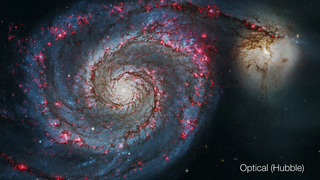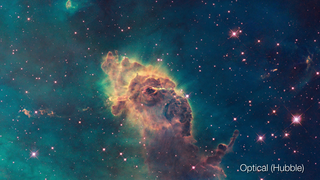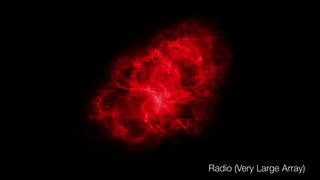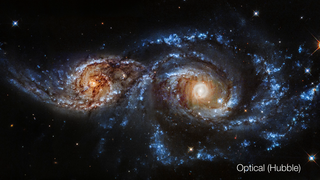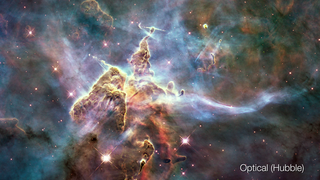Universe
ID: 30972
Galaxies come in all shapes and sizes. There are two dominant shapes: spiral galaxies, and "blobby" elliptical. Spirals have an organized rotation about a clear center, and the arms trail behind as they stretch farther from the center. Some spirals may have bulging central regions, or bar shapes, or extended halos. Elliptical galaxies appear to be a huge cloud of stars. The relationship between these two types is unclear. Astronomers think that galaxies can change from one type to the other, either by processes within their own galaxy, or by interactions with other galaxies. Galaxy collisions can create all new distinct shapes as they pass through each other and scramble their stellar populations and their gas and dust intermingle.
In this collage of galaxies, the first image presents a collection of visible light (Sloan) images, organized by the amount of dust in each galaxy. The dustiest galaxies are found in the lower left, and the least dusty in the upper right. In the visible image, there is not much to distinguish these galaxies from each other. However, in the second far-infrared (Herschel) image, the difference becomes obvious. Dust glows in the far-infrared; the galaxies in the upper right portion of the collage appear very small and compact in the far-IR, indicating that their dust is centrally concentrated. This technique can differentiate between galaxies in different stages of their evolution.
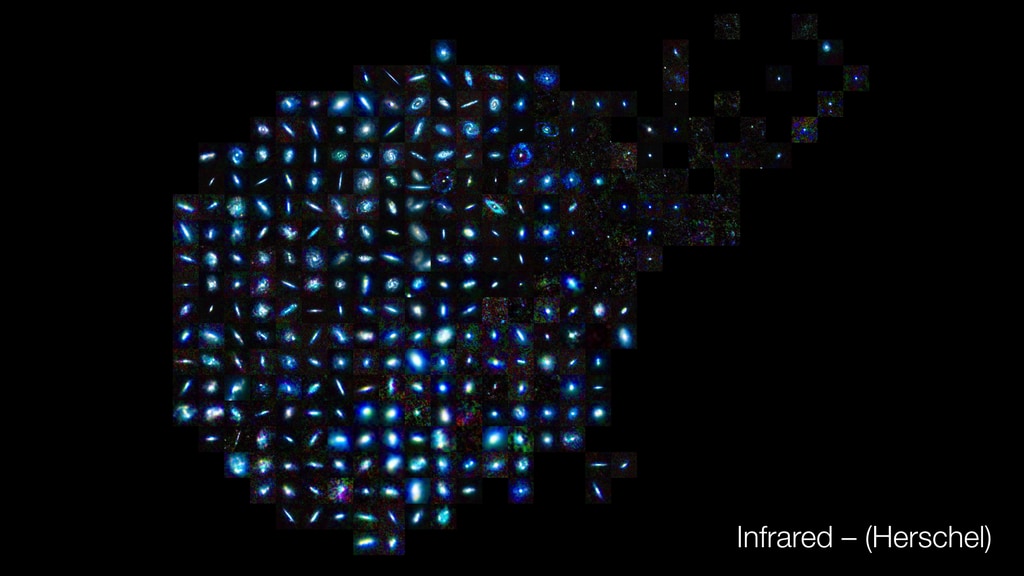
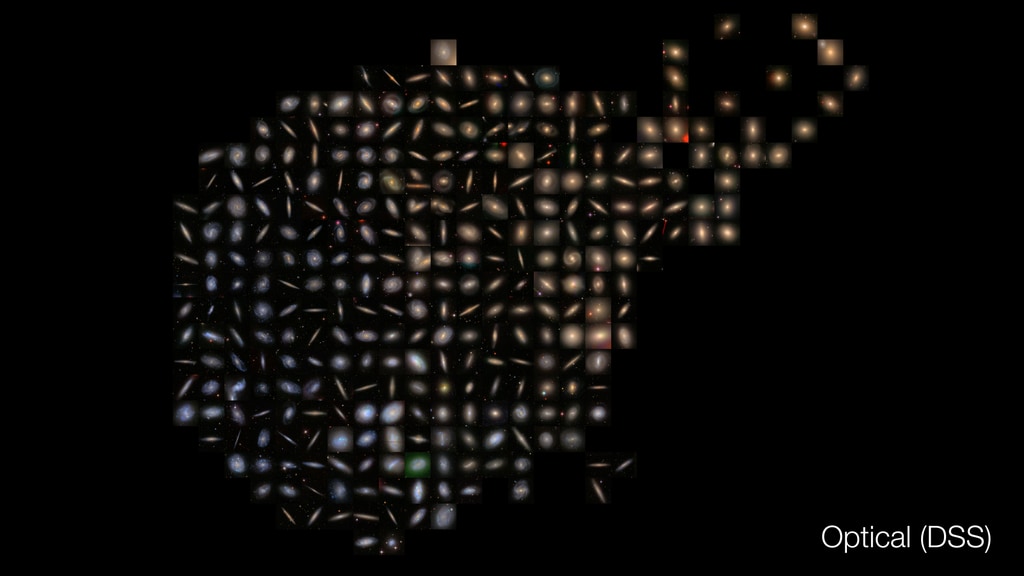
Zoo of Galaxies


Related
Credits
Greg Bacon (STScI): Visualizer
Leann Johnson (Global Science and Technology, Inc.): Technical Support
Leann Johnson (Global Science and Technology, Inc.): Technical Support
Please give credit for this item to:
Video Credit: NASA, ESA, and G. Bacon (STScI)
Image Credits: NASA, ESA, SDSS, ESA/Herschel
Video Credit: NASA, ESA, and G. Bacon (STScI)
Image Credits: NASA, ESA, SDSS, ESA/Herschel
Short URL to share this page:
https://svs.gsfc.nasa.gov/30972
Mission:
Herschel Space Observatory
Data Used:
Note: While we identify the data sets used in these visualizations, we do not store any further details nor the data sets themselves on our site.
Keywords:
SVS >> Dust
SVS >> Galaxy
SVS >> HDTV
SVS >> Infrared
SVS >> Hyperwall
NASA Science >> Universe
https://svs.gsfc.nasa.gov/30972
Mission:
Herschel Space Observatory
Data Used:
Sloan Digital Sky Survey (SDSS) also referred to as: Sloan
Herschel Space Telescope
ESAKeywords:
SVS >> Dust
SVS >> Galaxy
SVS >> HDTV
SVS >> Infrared
SVS >> Hyperwall
NASA Science >> Universe
